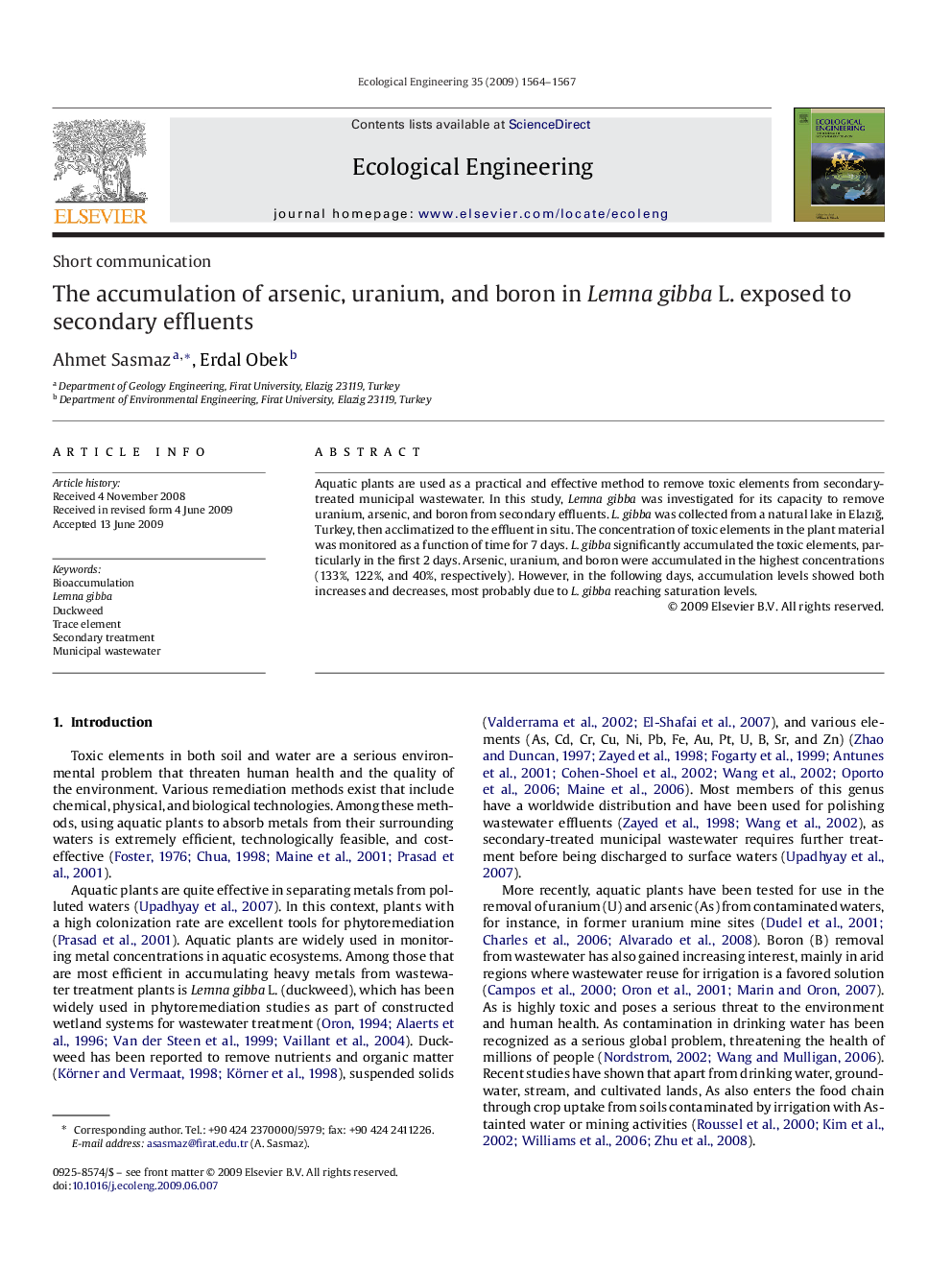| Article ID | Journal | Published Year | Pages | File Type |
|---|---|---|---|---|
| 4390735 | Ecological Engineering | 2009 | 4 Pages |
Abstract
Aquatic plants are used as a practical and effective method to remove toxic elements from secondary-treated municipal wastewater. In this study, Lemna gibba was investigated for its capacity to remove uranium, arsenic, and boron from secondary effluents. L. gibba was collected from a natural lake in ElazıÄ, Turkey, then acclimatized to the effluent in situ. The concentration of toxic elements in the plant material was monitored as a function of time for 7 days. L. gibba significantly accumulated the toxic elements, particularly in the first 2 days. Arsenic, uranium, and boron were accumulated in the highest concentrations (133%, 122%, and 40%, respectively). However, in the following days, accumulation levels showed both increases and decreases, most probably due to L. gibba reaching saturation levels.
Related Topics
Life Sciences
Agricultural and Biological Sciences
Ecology, Evolution, Behavior and Systematics
Authors
Ahmet Sasmaz, Erdal Obek,
